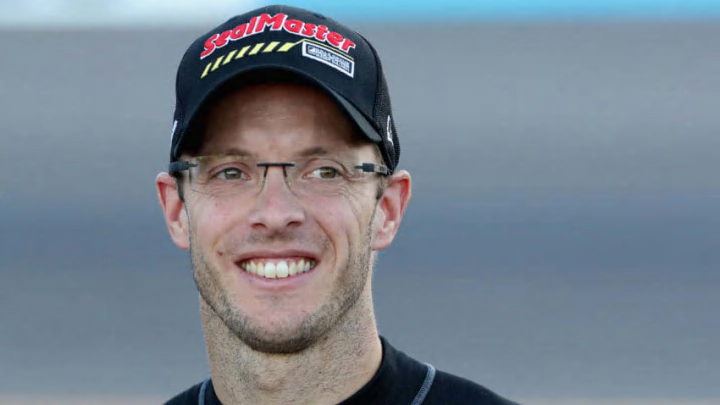After a late caution flag period spoiled the leaders’ chances of winning the IndyCar Classic at Circuit of the Americas, Sebastien Bourdais stated that they simply “will just never learn”.
Dale Coyne Racing’s Sebastien Bourdais started the second race of the 17-race 2019 IndyCar season, the IndyCar Classic, at Circuit of the Americas in 17th place in his #18 Honda, and he appeared to be slated to finish right around there after a lackluster race and a lackluster weekend as a whole.
But the 39-year-old Frenchman ended up finishing the race in fifth place, which was a much-needed result for him after an engine failure forced him to retire from the season opener, the Firestone Grand Prix of St. Petersburg, on the streets of St. Petersburg, Florida, relegating him to a disappointing 24th (last) place finish.
Bourdais was able to earn such an impressive finish, a finish that shot him from 24th to 15th place in the championship standings, largely due to a late caution flag period that changed the complexion of the race.
More from IndyCar
- IndyCar: Two teams with no drivers confirmed for 2024
- IndyCar: Chip Ganassi Racing news hints Alex Palou announcement
- IndyCar: ‘Addition by subtraction’ could pay off in a big way
- Team Penske should make a bold driver signing for 2024
- IndyCar: 5 teams that still have open seats for 2024
Up until lap 44 of the 60-lap race around the 20-turn, 3.41-mile (5.488-kilometer) Circuit of the Americas road course in Austin, Texas, the race had not featured a caution flag period.
But on lap 44, contact between Arrow Schmidt Peterson Motorsports’ James Hinchcliffe and Chip Ganassi Racing rookie Felix Rosenqvist brought out the first and only caution flag period of the race, as this contact sent Rosenqvist’s #10 Honda spinning before it hit the inside wall between turns 19 and 20.
At this point in time, Bourdais was running in 13th place, but he had already made his final pit stop. Meanwhile, seven of the 12 drivers who were running ahead of him had not yet made their final pit stops, meaning that they needed to do so under this caution flag period. As a result, they were slated to drop toward the back of the pack.
Among these seven drivers were Team Penske’s Will Power, who started the from the pole position, and Andretti Autosport’s Alexander Rossi. These drivers had driven away from the rest of the the field in first and second place, respectively, after starting in those positions. As a result, their chances of earning great finishes in this race were shot.
While Power never got the proper chance to compete following this caution flag period, as a drive shaft issue that revealed itself during his final pit stop prevented him from getting back on the track and relegated him to a 24th (last) place finish, Rossi did. After dropping well out of the top 10 because of this pit sequence, he ended up battling back to finish in ninth.
Bourdais, meanwhile, passed one of the five drivers, Carlin rookie Patricio O’Ward, who restarted the race ahead of him to secure his fifth place finish.
Here is what Bourdais had to say about his impressive and fortunate run to fifth place and about the decisions of the leaders not to come into the pits earlier than they did and thus to subject themselves to the threat of being in the “danger zone”, according to IndyCar.
"“I didn’t have anything this weekend, just nothing. We were en route for (finishing somewhere around places) 17-14 kind of deal. I’m just about here (pointing at the midpoint of pit road) and the yellow comes out on the last stop and I go, ‘Are you’re kidding me?!’ Next thing you know, you cycle (to) sixth and I got Pato on the back straight on the restart and that was that.“We don’t deserve it. I don’t deserve it, at least. I feel terrible for the leaders, but in the meantime, I don’t know why they stayed out (to pit as late as possible) because it really wasn’t hard to make it from 17 (laps to go). A lot of them stayed out, again. I guess the leaders, when you’re at the front, will just never learn.”"
This idea of the leaders taking their chances and staying out as long as possible regardless of how long they need to make their stints last has become a recurring theme in IndyCar over the years, and race results have been altered drastically as a result of it in far more than just a few instances.
